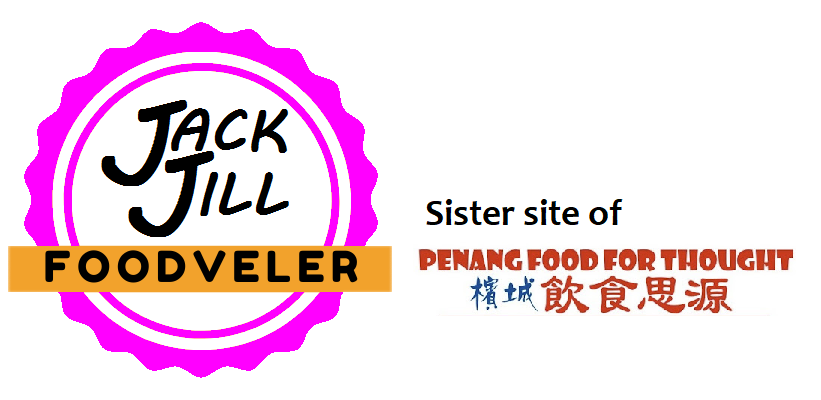 Special thanks to Wakaba for extending this food review invitation.
Special thanks to Wakaba for extending this food review invitation.
Update: This business has ceased its operations.
Wakaba Japanese Noodle Restaurant (若葉日本料理) is a Japanese ramen specialty shop at Elit Avenue. It is located on the same side of the mall as Sushi Mentai and Boiling Steamboat & Dim Sum.
The head chef of this eatery is Mr. Takashi Kadowaki (孝門脇さん), a veteran with 24 years of culinary experience in Japan. Mr. Kadowaki specializes in homemade noodles and soup recipes.
In the pursuit of freshness, Wakaba uses a noodle-making machine specially ordered from Japan. On the other hand, most Japanese restaurants tend to use ready-made raw noodles to save time, but this compromises the distinctive “fresh” appeal which ramen enthusiasts appreciate. Another notable advantage of making noodles on-site is not having to use any preservatives. To my knowledge, Wakaba is the only restaurant in Penang to own this piece of machinery.
This machine is able to prepare the 3 major types of Japanese noodles, namely ramen (ラーメン), udon (うどん) and soba (そば). Ramen and udon require wheat flour (the former requires eggs too), while the rough-texture soba uses buckwheat flour instead. This piece of hardware is fully automated, churning out a serving of noodles every 18 seconds or so!
The foremost signature dish is Chasyu Miso Ramen (チャーシュー味噌ラーメン, RM20.00). The miso soup (味噌汁) has moderate saltiness, definitely not as extreme as Hokkaido-style miso soup like the ones served at Menya Miyabi.
Several slices barbecued pork (叉焼) are included to impart savory flavors. The meat slices are quite tender and taste succulent indeed. A piece of narutomaki (鳴門巻き) and a generous quantity of spinach (ほうれん草) are meant to provide more balanced flavor. Chopped scallions serve to provide refreshing aroma.
This noodle dish includes a boiled egg, which looks similar to onsen tamago (温泉玉子) but is actually not. Onsen tamago simply takes too much time and attention to prepare. Therefore, using regular boiled eggs makes more sense since Wakaba’s primary highlights are the noodles and soup.
Wakaba provides 145 grams of noodles in each serving, which is uncharacteristically generous for a Japanese restaurant. According to the restaurant manager, the point is to allow customers to properly appreciate the freshness of its noodles. In addition, the ramen noodles are quite solid in texture, making a single serving quite sufficient for most people.
If miso ramen is not your cup of tea, Wakaba’s menu contains many different combinations of noodles, soup base and soup ingredients. For example, Kaisen Shoyu Ramen (海鮮醤油ラーメン) is also quite popular among regulars. Apart from noodles, also included in the menu are sushi (寿司), sashimi (刺身), curry rice (カレーライス), donburi (丼物) and bento set (弁当セット).
To streamline kitchen staffing, many side dishes are only available for dinner. One such dish is Hirekatsu (ひれかつ, RM12.00). While most people are familiar with Tonkatsu (豚カツ), there are two possible types of meat: fillet (ヒレ) and loin (ロース). Hirekatsu uses pork fillet which contains more lean meat. Surprisingly, this healthier meat cutting is more expensive on the market.
Tonkatsu sauce (豚カツソース) is provided as dipping sauce for Hirekatsu. This is a Japanese-adapted version of Worcestershire sauce. In addition, a mortar and pestle is provided for customers to grind some sesame seeds (ごま) in addition to tonkatsu sauce.
An order of Gyouza (餃子, RM10.00) comes in 5 pieces. Like its Chinese counterparts, these dumplings are pan-fried on a side, resulting in crispier skin on one surface. Some water is added, then the dumplings is covered with a lid until it is cooked. This cooking style is usually called yakigyoza (焼き餃子) to distinguish it from deep-fried gyoza (揚げ餃子) or boiled gyoza (水餃子)
Wakaba’s dumplings are made from a mixture of minced pork and garlic chives, both wrapped in thick dough skin. The dumplings should be consumed while still piping hot from the kitchen. As for the dipping sauce, tare sauce (垂れ) carries mild sourness as it contains some vinegar.
One should not overlook the desserts menu, which features several flavors of ice cream. As suggested by the staff, my choice is Sesame Ice Cream (ごまアイスクリーム, RM4.00) which is made in-house. To prepare this ice cream dessert, black sesame seeds are roasted, blended with milk, and then chilled. Other recommended ice cream flavors are Oreo (オリオ) and mango (マンゴー). Both of these are also prepared in-house at Wakaba.
The restaurant has a small private dining room should customers prefer some privacy. The room can be further divided into two using a piece of wooden partition.
Name: Wakaba Japanese Noodle Restaurant (若葉日本料理)
Address: 1-1-31, Elit Avenue, Jalan Mayang Pasir 3, 11950 Bayan Lepas, Pulau Pinang
Contact: 04-637-1122
Business hours: 11:30am-2:30pm, 6:00pm-10:00pm, closed on Mondays
Website: https://www.facebook.com/wakabapg
Coordinates: 5.32277 N, 100.28198 E
Directions: Wakaba is located at the western side of Elit Avenue in Bayan Baru. Roadside and garage parking are available.



